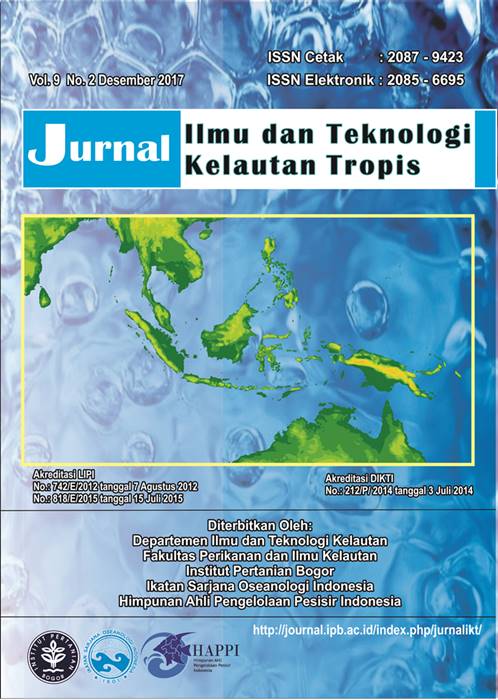GROWTH AND PROTEIN CONTENT OF Ulva prolifera MAINTAINED AT DIFFERENT FLOW RATES IN INTEGRATED AQUACULTURE SYSTEM
Abstract
Efforts to reduce the impact of waste improvement on degradation of water quality can be transferred by utilization of inorganic waste as a source of seaweed nutrition. This study aimed to determine the growth and protein content of Ulva prolifera maintained at different flow rates in integrated aquaculture system. 9 Yellowtail stocked with 5.095 g with an average weight of 566.11±81.51 g were kept in 540 L tank for 24 days, by water flowing at the rate of 10 L min-1. Water from the fish tank was distributed into the sediment tank and go to 6 Ulva tanks with the flow rate of 0.5, 1.0 and 1.5 L min-1. Test parameters measured were growth performance of Yellowtail, biomass of Ulva prolifera, protein content of Ulva prolifera, and total ammonia nitrogen. The measurement results showed that the biomass of fish increased to 5.408 g, then biomass of Ulva increased to 42 g, 156 g and 155 g for flow rate of 0.5 L, 1 L and 1.5 L min-1, respectively. The protein content of Ulva for all the treatments was the same (P> 0.05). A total of ammonia in the tank outlet of Ulva (0.0202 - 0.1137 mg N L-1) were smaller than those were in the inlet (0.0286 - 0.1394 mg N L-1).
Authors
The author submitting the manuscript must understand and agree that the copyright of the article manuscript must be submitted/transferred to the Jurnal Ilmu dan Teknologi Kelautan Tropis. This work is licensed under the Creative Commons Attribution-ShareAlike 4.0 (CC BY-SA) International License in which the Author and Reader can copy and redistribute the material in any media or format, and remix, modify and build material for any purpose, but they must provide appropriate credit (citing articles or content), provide a link to the license, and indicate whether there is a change. If you mix, change, or create material, you must distribute your contribution under the same license as the original.


